Themed collection Journal of Materials Chemistry A HOT Papers

CO2-switchable membranes: structures, functions, and separation applications in aqueous medium
CO2-switchable membranes represent an exciting separation technology based on gas-tunable pore sizes and surface properties.
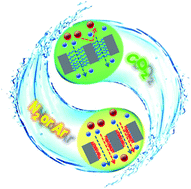
J. Mater. Chem. A, 2020,8, 16738-16746
https://doi.org/10.1039/D0TA04835F
Boosting electrochemical water oxidation: the merits of heterostructured electrocatalysts
Heterostructure interface engineering brings about substantial possibilities for designing efficient electrocatalysts toward the oxygen evolution reaction.

J. Mater. Chem. A, 2020,8, 6393-6405
https://doi.org/10.1039/D0TA00708K
Can perovskite inspired bismuth halide nanocrystals outperform their lead counterparts?
In the quest for finding non-toxic and stable lead-free perovskite nanocrystals (NCs), bismuth halide perovskites (BHP) have emerged as a promising alternative. This perspective presents an overview, challenges, and future opportunities in BHP NCs.

J. Mater. Chem. A, 2020,8, 12951-12963
https://doi.org/10.1039/D0TA03490H
The fox and the hound: in-depth and in-grain Na doping and Ga grading in Cu(In,Ga)Se2 solar cells
Highly efficient chalcopyrite photovoltaic cells display complex distributions of sodium dopant and gallium: how are these distributions related to each other?

J. Mater. Chem. A, 2020,8, 6471-6479
https://doi.org/10.1039/D0TA01103G
Increasing the active sites and intrinsic activity of transition metal chalcogenide electrocatalysts for enhanced water splitting
Strategies for enhancing the electrocatalytic activities of transition metal chalcogenides by increasing the number of active sites and intrinsic activity.
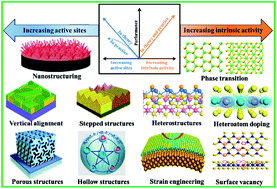
J. Mater. Chem. A, 2020,8, 25465-25498
https://doi.org/10.1039/D0TA08802A
Probing the charged state of layered positive electrodes in sodium-ion batteries: reaction pathways, stability and opportunities
The complex behaviour of layered oxide cathode materials at high voltages currently limits the energy densities which can be achieved by sodium-ion batteries.

J. Mater. Chem. A, 2020,8, 24833-24867
https://doi.org/10.1039/D0TA09553B
State-of-the-art advancements in photo-assisted CO2 hydrogenation: recent progress in catalyst development and reaction mechanisms
The recent advances in photo-promoted CO2 hydrogenation over solid catalysts have been reviewed.
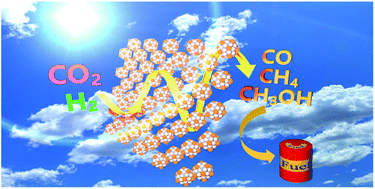
J. Mater. Chem. A, 2020,8, 24868-24894
https://doi.org/10.1039/D0TA08781E
Rational design of poly(ethylene oxide) based membranes for sustainable CO2 capture
The separation mechanism and material design of advanced PEO membranes for CO2 capture have been reviewed in detail and further directions in this field have been provided.
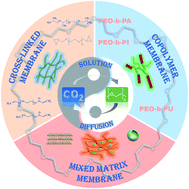
J. Mater. Chem. A, 2020,8, 24233-24252
https://doi.org/10.1039/D0TA08806D
Photo-driven Fischer–Tropsch synthesis
Photo-driven Fischer–Tropsch synthesis (FTS) provides a attractive and sustainable alternative compared to traditional FTS. This minireview expatiates the recent advances of various metal-based catalysts for photo-driven FTS.
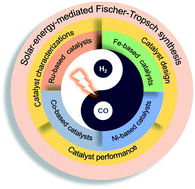
J. Mater. Chem. A, 2020,8, 24253-24266
https://doi.org/10.1039/D0TA09097B
Metal-free photo- and electro-catalysts for hydrogen evolution reaction
Hydrogen production as very attractive clean energy technology has sparked the accelerated development of catalysts for the hydrogen evolution reaction (HER) towards efficient photo- and electrolytic water splitting.
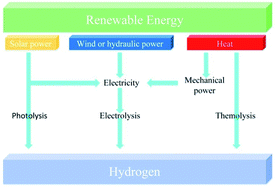
J. Mater. Chem. A, 2020,8, 23674-23698
https://doi.org/10.1039/D0TA08704A
Recent progress in ternary organic solar cells based on solution-processed non-fullerene acceptors
A comprehensive review on TOSCs, which can provide valuable guidance for the further development of high-performance TOSCs with good stability.
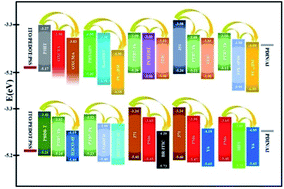
J. Mater. Chem. A, 2020,8, 23096-23122
https://doi.org/10.1039/D0TA08559F
Noble-metal-free electrocatalysts toward H2O2 production
This review summaries recent progress of noble-metal-free electrocatalysts toward H2O2 production including carbon-based materials, metal compounds, single atom catalysts and metal complexes.
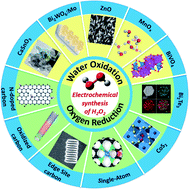
J. Mater. Chem. A, 2020,8, 23123-23141
https://doi.org/10.1039/D0TA08894C
Design and fabrication of conductive polymer hydrogels and their applications in flexible supercapacitors
Conductive polymer hydrogels, which combine the advantages of both polymers and conductive materials, have huge potential in flexible supercapacitors.

J. Mater. Chem. A, 2020,8, 23059-23095
https://doi.org/10.1039/D0TA07468C
Recent progress in noble metal nanocluster and single atom electrocatalysts for the hydrogen evolution reaction
This article reviews the latest research results of advanced noble metal nanocluster and single-atom electrocatalysts for the HER.
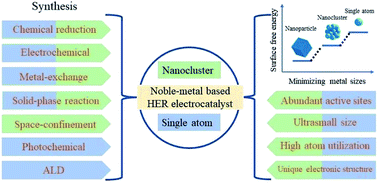
J. Mater. Chem. A, 2020,8, 22467-22487
https://doi.org/10.1039/D0TA06942F
Review on the production of high-purity lithium metal
This article presents a systematic review on the history of production of lithium metal and an insightful outlook on its future development.
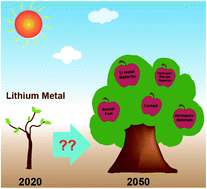
J. Mater. Chem. A, 2020,8, 22455-22466
https://doi.org/10.1039/D0TA07611B
Vanadium sulfide based materials: synthesis, energy storage and conversion
The synthetic methods for vanadium sulfide based materials and their applications in energy storage and conversion are discussed.

J. Mater. Chem. A, 2020,8, 20781-20802
https://doi.org/10.1039/D0TA07436E
Recent developments and perspectives in CdS-based photocatalysts for water splitting
Over the past decades, visible-light-driven water splitting on CdS has gained substantial attention owing to its low cost, appropriate bandgap, and electron affinity that best fit the visible light absorption spectrum.
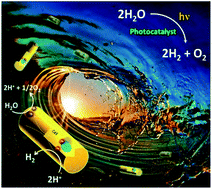
J. Mater. Chem. A, 2020,8, 20752-20780
https://doi.org/10.1039/D0TA05834C
Expeditious synthesis of covalent organic frameworks: a review
A comprehensive overview of the advances in the expeditious synthesis of COFs.
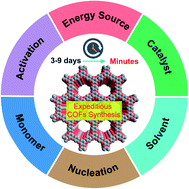
J. Mater. Chem. A, 2020,8, 16045-16060
https://doi.org/10.1039/D0TA05894G
From isolated Ti-oxo clusters to infinite Ti-oxo chains and sheets: recent advances in photoactive Ti-based MOFs
This review highlights recent progress in Ti-MOFs based on discrete Ti-oxo clusters and infinite Ti-oxo chains and sheets.

J. Mater. Chem. A, 2020,8, 15245-15270
https://doi.org/10.1039/D0TA03749D
Advances in manganese-based oxides for oxygen evolution reaction
This review highlights the recent advances made in MnOx nanostructures as a promising candidate for use in electrochemical oxygen evolution reaction.

J. Mater. Chem. A, 2020,8, 14400-14414
https://doi.org/10.1039/D0TA05116K
Recent progress in carbonyl-based organic polymers as promising electrode materials for lithium-ion batteries (LIBs)
Lithium-ion batteries (LIBs) have been demonstrated as one of the most promising energy storage devices for applications in electric vehicles, smart grids, large-scale energy storage systems, and portable electronics.
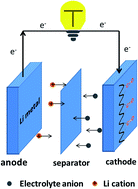
J. Mater. Chem. A, 2020,8, 11906-11922
https://doi.org/10.1039/D0TA03321A
Nano-domains in lead-free piezoceramics: a review
A systematic review summarizing and analyzing the role of recently observed nano-domains and polar nanoregions (PNRs) in lead-free piezoceramics.

J. Mater. Chem. A, 2020,8, 10026-10073
https://doi.org/10.1039/D0TA03201H
Engineering pristine 2D metal–organic framework nanosheets for electrocatalysis
This review highlights recent advances and future opportunities in pristine MOF nanosheets for electrocatalysis.

J. Mater. Chem. A, 2020,8, 8143-8170
https://doi.org/10.1039/D0TA03138K
Defect engineering of nanostructured electrocatalysts for enhancing nitrogen reduction
Defect engineering of nanostructured electrocatalysts for enhancing the nitrogen reduction reaction is systematically reviewed with challenges and opportunities for further research discussed.

J. Mater. Chem. A, 2020,8, 7457-7473
https://doi.org/10.1039/D0TA01453B
Covalent organic frameworks: emerging high-performance platforms for efficient photocatalytic applications
In this review, a comprehensive summary of the potential photocatalytic applications realized to date in the fast-growing field of COFs is provided with the aim to present a full blueprint of COFs for photochemical energy conversion and reactions.

J. Mater. Chem. A, 2020,8, 6957-6983
https://doi.org/10.1039/D0TA00556H
Design and engineering of layered double hydroxide based catalysts for water depollution by advanced oxidation processes: a review
Various strategies to design LDH catalysts for advanced oxidation processes.

J. Mater. Chem. A, 2020,8, 4141-4173
https://doi.org/10.1039/C9TA13522G
Vanadium-containing electro and photocatalysts for the oxygen evolution reaction: a review
This review summarizes the recent progress in vanadium-containing catalysts, including the synthesis strategies and performance in electrocatalytic and photocatalytic oxygen evolution.
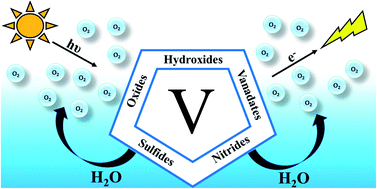
J. Mater. Chem. A, 2020,8, 2171-2206
https://doi.org/10.1039/C9TA10857B
Nucleation and crystal growth control for scalable solution-processed organic–inorganic hybrid perovskite solar cells
In this review, we provide an in-depth overview of perovskite film formation mechanism and highlight the important role of nucleation/crystal growth in perovskite photovoltaics by using scalable solution deposition techniques.
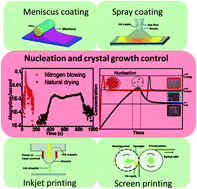
J. Mater. Chem. A, 2020,8, 1578-1603
https://doi.org/10.1039/C9TA11245F
Design strategy of barium titanate/polyvinylidene fluoride-based nanocomposite films for high energy storage
Barium titanate/polyvinylidene fluoride- (BT/PVDF-) based nanocomposite film exhibits excellent energy storage and mechanical properties and can be used as flexible electronic components.

J. Mater. Chem. A, 2020,8, 884-917
https://doi.org/10.1039/C9TA11527G
Regulating the growth of aluminum electrodeposits: towards anode-free Al batteries
2-D Au coatings enable stable and uniform deposition of Aluminum.
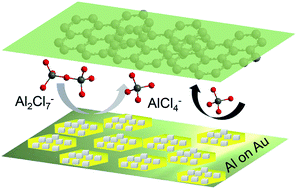
J. Mater. Chem. A, 2020,8, 23231-23238
https://doi.org/10.1039/D0TA08505G
Designing a slope-dominated hybrid nanostructure hard carbon anode for high-safety and high-capacity Na-ion batteries
A slope-dominated mechanism is designed by preparing hybrid nanostructure carbon materials using a CVD-like method which provides hard carbon with excellent rate performances and high average discharge potential as an anode for Na-ion batteries.

J. Mater. Chem. A, 2020,8, 22613-22619
https://doi.org/10.1039/D0TA08895A
Constructing an interface synergistic effect from a SnS/MoS2 heterojunction decorating N, S co-doped carbon nanosheets with enhanced sodium ion storage performance
Bimetallic sulfide SnS/MoS2 heterostructures decorating N, S co-doped carbon nanosheets have been synthesized, and evaluated as high performance anode materials for SIBs.
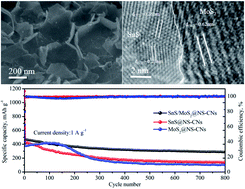
J. Mater. Chem. A, 2020,8, 22593-22600
https://doi.org/10.1039/D0TA08858G
Dynamic evolution of isolated Ru–FeP atomic interface sites for promoting the electrochemical hydrogen evolution reaction
An isolated Ru-modified FeP catalyst was designed with boosted catalytic performance for the hydrogen evolution reaction. Further, we revealed that the bond-length-extended isolated Ru(+3)–P4–Fe serve as active sites through operando XAS analysis.

J. Mater. Chem. A, 2020,8, 22607-22612
https://doi.org/10.1039/D0TA08940K
Optimal d-band-induced Cu3N as a cocatalyst on metal sulfides for boosting photocatalytic hydrogen evolution
The appropriate d-band center of Cu3N induced its intrinsic privileges towards H2 generation as a cocatalyst with 851-fold enhancement.
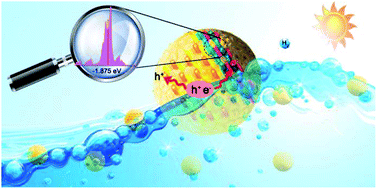
J. Mater. Chem. A, 2020,8, 22601-22606
https://doi.org/10.1039/D0TA07916B
CuO–C modified glass fiber films with a mixed ion and electron-conducting scaffold for highly stable lithium metal anodes
3D CuO–C modified glass fiber films with a mixed ion and electron-conducting network to realize the homogenized lithium ion flux by supplying widespread inner lithium ion transport channels in the skeleton.
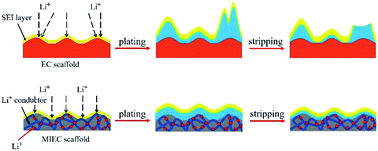
J. Mater. Chem. A, 2020,8, 21961-21967
https://doi.org/10.1039/D0TA09113H
Graphdiyne-based Pd single-atom catalyst for semihydrogenation of alkynes to alkenes with high selectivity and conversion under mild conditions
Pd–GDY catalysts show an evident dependence on Pd species size in hydrogenation reaction. Specifically, Pds–GDY shows superior performance in semihydrogenation of phenylacetylene with much higher TOF of 6290 h−1 and selectivity of 99.3% at 100% conversion.

J. Mater. Chem. A, 2020,8, 20925-20930
https://doi.org/10.1039/D0TA07705D
Metal–organic framework-derived hierarchical ultrathin CoP nanosheets for overall water splitting
Carbon-matrix-free hierarchical CoP nanorods composed of ultrathin nanosheets are successfully fabricated based on Co-MOFs for efficient water splitting.
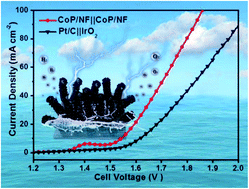
J. Mater. Chem. A, 2020,8, 19254-19261
https://doi.org/10.1039/D0TA07616C
Characterization of mechanical degradation in an all-solid-state battery cathode
In this work, we visualize and quantify the microstructure evolution in the composite electrode after solid-state battery (SSB) cycling. The observed severe mechanical degradation highlights the importance of mechanical considerations in SSB design.
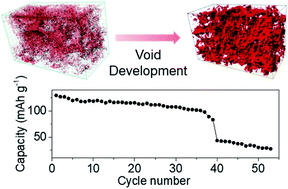
J. Mater. Chem. A, 2020,8, 17399-17404
https://doi.org/10.1039/D0TA06985J
Efficient spreading and controllable penetration of high-speed drops on superhydrophobic surface by vesicles
Water drops with a vesicle surfactant exhibit efficient spreading and controllable penetration after high speed impact on a superhydrophobic surface.
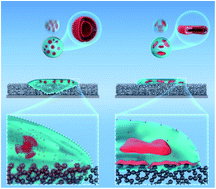
J. Mater. Chem. A, 2020,8, 17392-17398
https://doi.org/10.1039/D0TA06683D
Molecular-level electrochemical doping for fine discrimination of volatile organic compounds in organic chemiresistors
A blend of π-CPs and a solid-state ionic liquid provides an enlarged interfacial area at the molecular scale, thereby enabling two-terminal organic chemiresistors (TOCs) with fine discriminatory abilities for sub-ppm-level VOCs at room temperature.
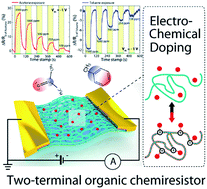
J. Mater. Chem. A, 2020,8, 16884-16891
https://doi.org/10.1039/D0TA05530A
Activating VS2 basal planes for enhanced NRR electrocatalysis: the synergistic role of S-vacancies and B dopants
The synergistic role of S-vacancies and B-dopants enables the effective activation of VS2 basal planes for achieving dramatically enhanced NRR activity.
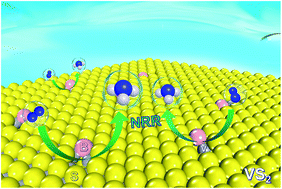
J. Mater. Chem. A, 2020,8, 16195-16202
https://doi.org/10.1039/D0TA05282E
The strong electrocaloric effect in molecular ferroelectric ImClO4 with ultrahigh electrocaloric strength
Molecular ferroelectric shows high potential for electrocaloric effect (ECE) cooling due to its special polarization mechanism.
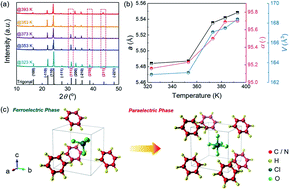
J. Mater. Chem. A, 2020,8, 16189-16194
https://doi.org/10.1039/D0TA05154C
Boosting CO2 electrolysis performance via calcium-oxide-looping combined with in situ exsolved Ni–Fe nanoparticles in a symmetrical solid oxide electrolysis cell
The electrocatalysis of CO2 to valuable chemical products is an important strategy to combat global warming.

J. Mater. Chem. A, 2020,8, 14895-14899
https://doi.org/10.1039/D0TA05518B
Hidden role of Bi incorporation in nonradiative recombination in methylammonium lead iodide
BiPb is not a recombination center in hybrid perovskites, but promotes the formation of the actual recombination centers—iodine interstitials.
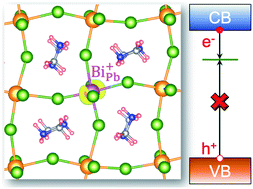
J. Mater. Chem. A, 2020,8, 12964-12967
https://doi.org/10.1039/D0TA04968A
Ternary ZIF-8-derived dual-metal CoCu nanoparticles in porous carbon polyhedra as efficient catalysts for methanol oxidation
Novel ternary-metallic ZIFs are synthesized in one step and then converted into efficient dual-metal/nanoporous carbon electrocatalysts for the methanol oxidation reaction.
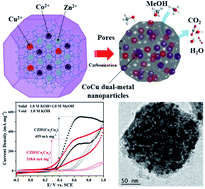
J. Mater. Chem. A, 2020,8, 12285-12290
https://doi.org/10.1039/D0TA04146G
Ultrafine phosphorus-doped rhodium for enhanced hydrogen electrocatalysis in alkaline electrolytes
Synergistic tailoring of the electronic structure of Rh through P doping contributes to the remarkable HER/HOR performances.
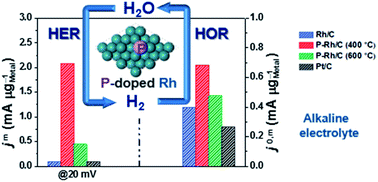
J. Mater. Chem. A, 2020,8, 11923-11927
https://doi.org/10.1039/D0TA04260A
A scalable Al–Ni alloy powder catalyst prepared by metallurgical microstructure control
Metallurgical microstructure control of Al–Ni alloys enabled scalable and facile synthesis of large-area electrodes for alkaline hydrogen evolution catalysts comparable to conventional Pt catalysts.
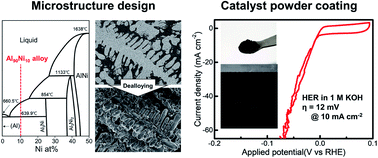
J. Mater. Chem. A, 2020,8, 11133-11140
https://doi.org/10.1039/D0TA03391J
Ultrahigh enhancement rate of the energy density of flexible polymer nanocomposites using core–shell BaTiO3@MgO structures as the filler
An ultrahigh enhancement rate of Ud (≈187%) and Ud (≈19 J cm−3) have been obtained for P(VDF-HFP)-based nanocomposites using novel core–shell BaTiO3@MgO as the filler.

J. Mater. Chem. A, 2020,8, 11124-11132
https://doi.org/10.1039/D0TA03304A
Metal–organic framework derived copper catalysts for CO2 to ethylene conversion
MOF-derived copper catalysts underwent a surface reconstruction to form a Cu@CuxO core@shell structure during CO2RR process, which was beneficial for CO2 to C2H4 conversion, resulting in a 51% FE for C2H4 and 70% FE for C2+ products.
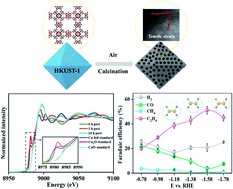
J. Mater. Chem. A, 2020,8, 11117-11123
https://doi.org/10.1039/D0TA02395G
Creating compressive stress at the NiOOH/NiO interface for water oxidation
The compressive stress at the NiOOH/NiO interface, created through the battery conversion chemistry, is found to influence the OER performance.
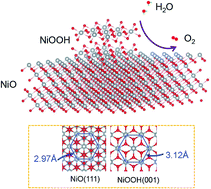
J. Mater. Chem. A, 2020,8, 10747-10754
https://doi.org/10.1039/D0TA04244G
Electrochemical conversion of bulk platinum into platinum single-atom sites for the hydrogen evolution reaction
An electro-filtration strategy is used to access a Pt single-atom sites catalyst on graphite carbon paper at room temperature from Pt foil, assisted by a GOM membrane. It exhibits excellent activity and stability towards HER (with CdS) under visible-light irradiation.

J. Mater. Chem. A, 2020,8, 10755-10760
https://doi.org/10.1039/D0TA02351E
An efficient medium-bandgap nonfullerene acceptor for organic solar cells
A medium-bandgap nonfullerene acceptor IBCT was developed, delivering 11.26% and 15.25% power conversion efficiencies in single-junction and tandem solar cells, respectively.
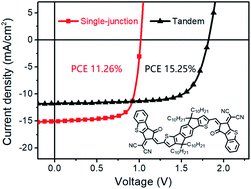
J. Mater. Chem. A, 2020,8, 8857-8861
https://doi.org/10.1039/D0TA02427A
Synthesis of high-performance polycrystalline metal–organic framework membranes at room temperature in a few minutes
Our method hinders the Ostwald ripening of polycrystalline MOF film during the solvothermal synthesis, allowing the growth of high-quality MOF films in just 8 min at room temperature.

J. Mater. Chem. A, 2020,8, 7633-7640
https://doi.org/10.1039/C9TA12027K
“Nano-garden cultivation” for electrocatalysis: controlled synthesis of Nature-inspired hierarchical nanostructures
The rational coupling of hydrothermal and electrodeposition approaches enables controlled synthesis of various CoP Nature-inspired nanostructures with distinct electrocatalytic performance.

J. Mater. Chem. A, 2020,8, 7626-7632
https://doi.org/10.1039/D0TA00870B
Transannularly conjugated tetrameric perylene diimide acceptors containing [2.2]paracyclophane for non-fullerene organic solar cells
Two isomeric perylene diimide acceptors with through-space conjugated [2.2]paracyclophane as a central core show dramatic differences in device performances.
![Graphical abstract: Transannularly conjugated tetrameric perylene diimide acceptors containing [2.2]paracyclophane for non-fullerene organic solar cells](/ko/Image/Get?imageInfo.ImageType=GA&imageInfo.ImageIdentifier.ManuscriptID=D0TA00047G&imageInfo.ImageIdentifier.Year=2020)
J. Mater. Chem. A, 2020,8, 6501-6509
https://doi.org/10.1039/D0TA00047G
Simple organic donors based on halogenated oligothiophenes for all small molecule solar cells with efficiency over 11%
A set of centrally halogenated oligothiophenes were developed for organic solar cells. The devices with a chlorinated donor (2Cl7T) achieved power conversion efficiencies (PCEs) of up to ca. 11.5% (vs. ca. 2.5% for non-halogenated donor DRCN7T).

J. Mater. Chem. A, 2020,8, 5843-5847
https://doi.org/10.1039/D0TA00159G
Molecular engineering of acceptors to control aggregation for optimized nonfullerene solar cells
Dual molecular engineering of alkyl side chains and halogen accepting ends of asymmetric fused-ring acceptors has been proposed for controlling aggregation for optimize organic solar cells (OSCs).
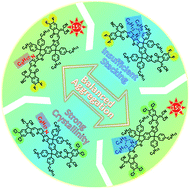
J. Mater. Chem. A, 2020,8, 5458-5466
https://doi.org/10.1039/D0TA00651C
Pressure effects on sulfide electrolytes for all solid-state batteries
All-solid-state batteries exhibit good performance even at low operating stack pressure when soft electrode materials are used.
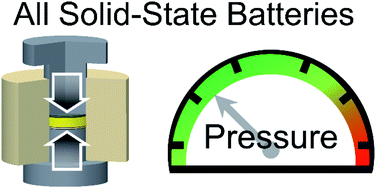
J. Mater. Chem. A, 2020,8, 5049-5055
https://doi.org/10.1039/C9TA12889A
Surface oxidized two-dimensional antimonene nanosheets for electrochemical ammonia synthesis under ambient conditions
Few-layer antimonene nanosheets with surface oxidation have been used as an efficient nitrogen reduction reaction electrocatalyst for ammonia synthesis.

J. Mater. Chem. A, 2020,8, 4735-4739
https://doi.org/10.1039/C9TA13485A
Fluorinated solid additives enable high efficiency non-fullerene organic solar cells
Fluorinated solid additives have been designed to increase the π–π stacking of non-fullerene acceptor BTP-4F, leading to increased efficiency from 15.2% to 16.5% of PBDB-T-2F:BTP-4F binary solar cells with excellent stability.
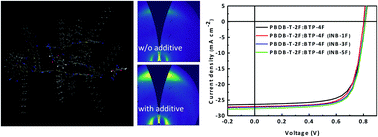
J. Mater. Chem. A, 2020,8, 4230-4238
https://doi.org/10.1039/C9TA13974E
Towards high rate Li metal anodes: enhanced performance at high current density in a superconcentrated ionic liquid
Application of high current density demonstrated enhanced cycling efficiency and the formation of a stable and LiF dominated SEI providing a new path to enable fast charge battery technologies.

J. Mater. Chem. A, 2020,8, 3574-3579
https://doi.org/10.1039/C9TA12004A
Surface oxygen-mediated ultrathin PtRuM (Ni, Fe, and Co) nanowires boosting methanol oxidation reaction
The surface-oxygen-modified ultrathin Pt62Ru18Ni20–O/C nanowires catalyst exhibits outstanding mass activity, excellent stability, and CO anti-poisoning for methanol oxidation reaction in acidic medium by DFT and electrochemical experiments.

J. Mater. Chem. A, 2020,8, 2323-2330
https://doi.org/10.1039/C9TA11745H
Black BiVO4: size tailored synthesis, rich oxygen vacancies, and sodium storage performance
Size tailored black BiVO4 colloids with rich oxygen vacancies were generated via facile laser processing for high performance sodium storage.

J. Mater. Chem. A, 2020,8, 1636-1645
https://doi.org/10.1039/C9TA13021G
Promoting nitrogen photofixation over a periodic WS2@TiO2 nanoporous film
WS2@TiO2 nanoporous films were fabricated by implanting WS2 nanosheets in TiO2 nanoporous films and show efficient photocatalytic N2 fixation.
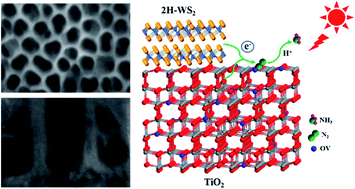
J. Mater. Chem. A, 2020,8, 1059-1065
https://doi.org/10.1039/C9TA12743G
An ion-in-conjugation polymer enables the detection of NO2 with parts-per-trillion sensitivity and ultrahigh selectivity
The detection of nitric dioxide (NO2) at the parts-per-trillion (ppt) level is critical for both environmental monitoring and human health.
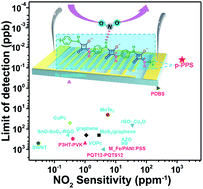
J. Mater. Chem. A, 2020,8, 1052-1058
https://doi.org/10.1039/C9TA11513G
A super-thermostable, flexible supercapacitor for ultralight and high performance devices
High-temperature operation and flexible supercapacitors are designed from graphene aerogel electrodes and IL-FSN based polymer composite electrolytes, achieving a high capacitance of 1007 F g−1 and an energy density of 1134 Wh kg−1 at 200 °C.

J. Mater. Chem. A, 2020,8, 532-542
https://doi.org/10.1039/C9TA11275H
Electrocatalytic reduction of N2 and nitrogen-incorporation process on dopant-free defect graphene
Defect graphene was developed as an efficient electrocatalyst for the NRR and transformed from dopant-free graphene to N-doped graphene after the NRR.
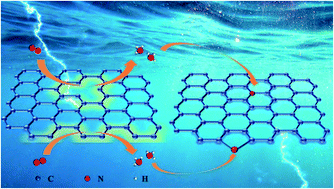
J. Mater. Chem. A, 2020,8, 55-61
https://doi.org/10.1039/C9TA10071G
Tailoring the hetero-structure of iron oxides in the framework of nitrogen doped carbon for the oxygen reduction reaction and zinc–air batteries
We report a H2-thermal-reduction strategy to fabricate FeOx/Fe NPs dispersed on a porous N-doped carbon framework. The optimal hybrid exhibited high ORR performance with an E1/2 of 0.838 V and remarkable Zn–air battery performance with a peak power density of 156.6 mW cm−2.
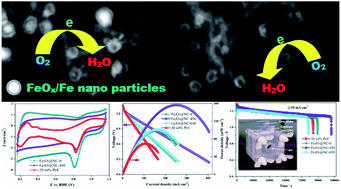
J. Mater. Chem. A, 2020,8, 25791-25804
https://doi.org/10.1039/D0TA09828K
High-throughput investigation of the formation of double spinels
Using high-throughput first-principles calculations, a list of 92 double spinel chemistries are screened for their stability; 49 stable double spinels are identified, representing potentially new compounds with unique properties and functionality.
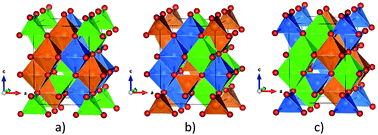
J. Mater. Chem. A, 2020,8, 25756-25767
https://doi.org/10.1039/D0TA09200B
Mesoporous PdAgIr nanoalloys to catalyze formate oxidation with an unprecedentedly low onset potential
A novel PdAgIr NFs/C alloy with ordered mesoporous architecture is designed as an advanced catalyst for FOR, which, for the first time, delivers a record-low onset potential, outstanding stability and impressive oxidation current density platform.
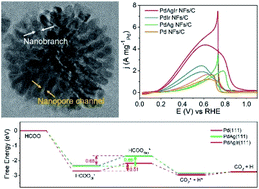
J. Mater. Chem. A, 2020,8, 25780-25790
https://doi.org/10.1039/D0TA10118D
About this collection
This on-going web collection features all the articles published in Journal of Materials Chemistry A in 2020 marked as HOT, as recommended by referees. Congratulations to all the authors whose articles are featured!